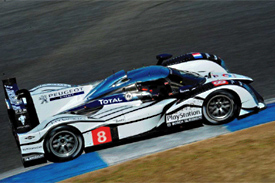Early this year I whined about the lack of an American model of the Jaguar Diesel
It’s so fast, despite being fuel efficient, the police even have a model. Actually, the police model gets the smaller 40mpg engine but it still runs under 6 seconds to 60
Later in the year I complained about the strange case of the Los Angeles County Police Department who boasted about squeezing a tiny amount of efficiency out of a new fleet of expensive Ford gasoline engines.
[The Jaguar diesel] has the same horsepower rating as the new Police Interceptor sedan in Los Angeles, yet double the mpg. Why are police in America getting shafted (pun not intended) by Ford on this technology? The County could be saving a whole lot more.
Here are some guestimates, based on the Ford press release. It says the current police car gets between 14 mpg and 21 mpg. A new engine will improve by 20 percent, which puts it at 17 mpg to 25 mpg.
Those are modest numbers, at best. Moving to a 40 mpg Jaguar XF Diesel S would achieve a 90 percent improvement ( (40-21) / 21 = .9 ).
Fast forward to today…
I am happy to say that just a few minutes ago the official Jaguar Twitter stream announced their Jaguar XF “2.2-litre four-cylinder diesel with an eight-speed automatic gear box with stop-start” will soon arrive to California to complete their cross-country road test.
Day Seven. Flagstaff, Arizona to Victorville, California.
The #XFCoast2Coast road test has already tweeted results above 60mpg but they are keeping the final results quiet until they reach Los Angeles County.
I hope they can draw the attention of the LAPD, who should immediately confiscate the vehicle and then convert it to a police cruiser as the first step in reducing massive amounts of American taxpayer money wasted on antiquated/inefficient technology and foreign fuel.
LA County estimated $20 million in savings from a 20% improvement in efficiency. Imagine the savings from 90% improvement! $90 million?
Diesel. It is what the future will look like:




